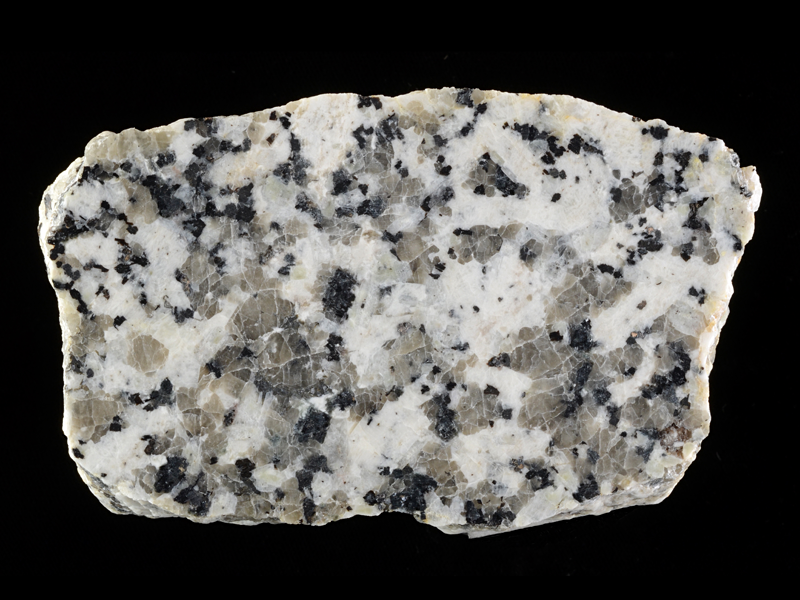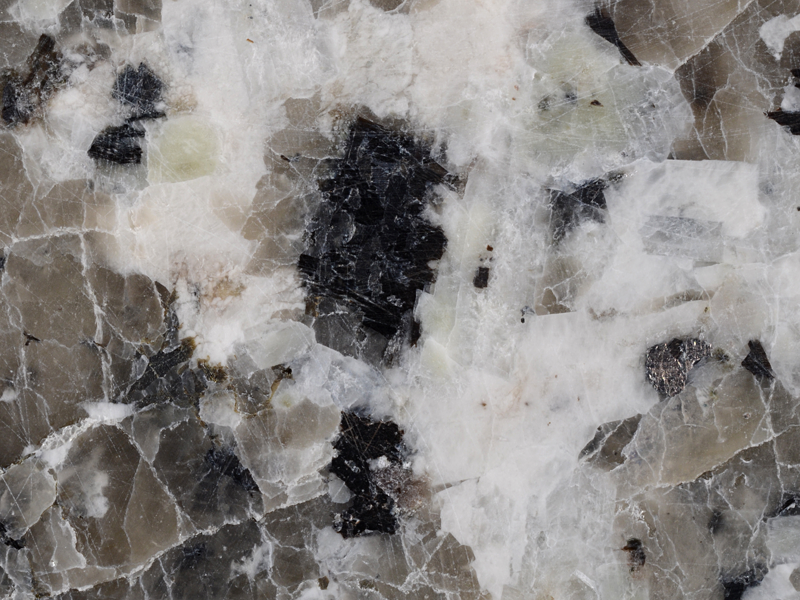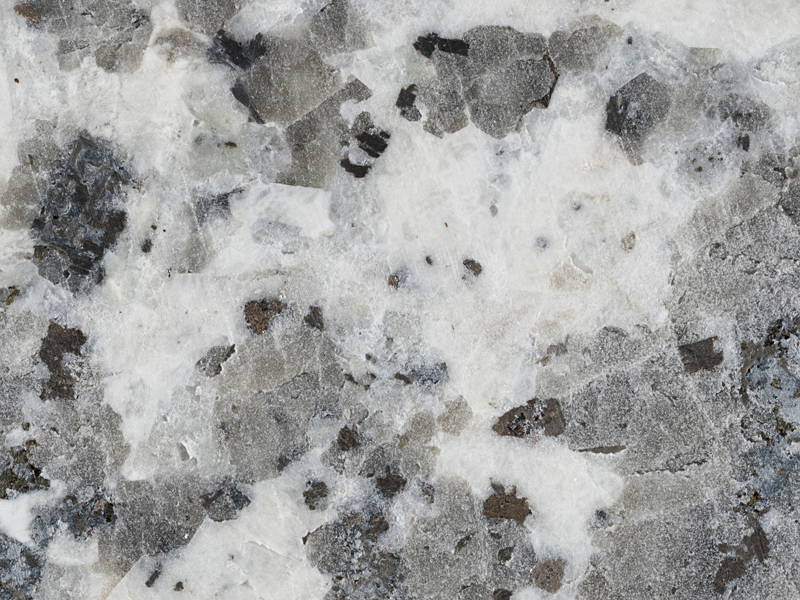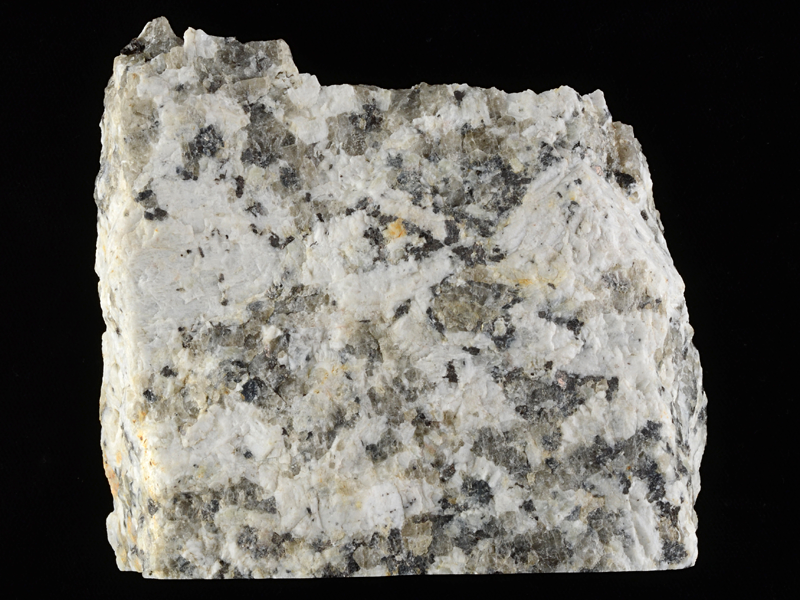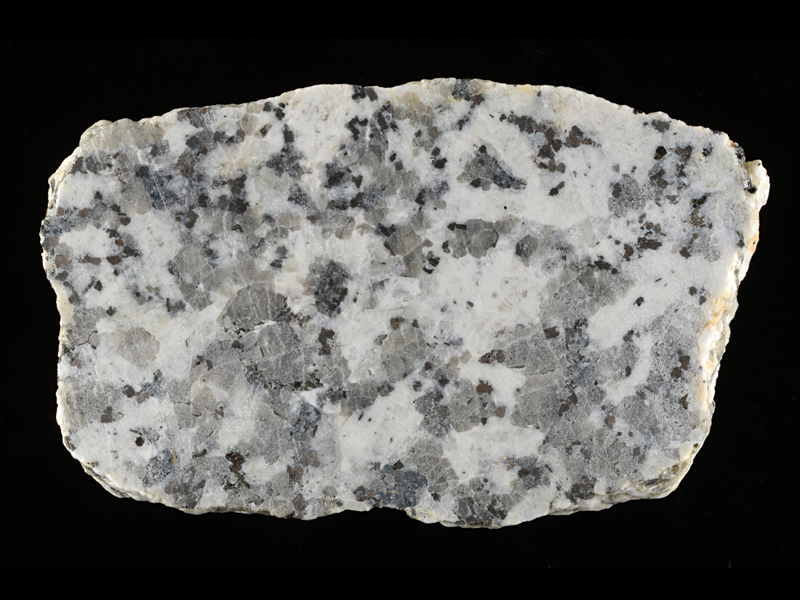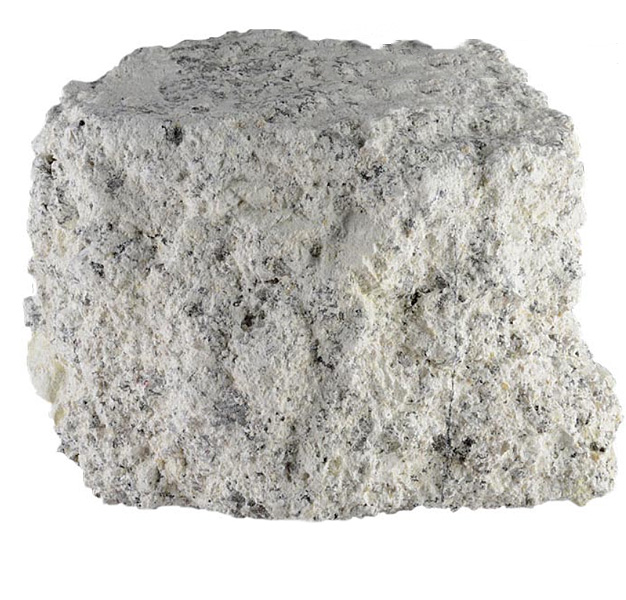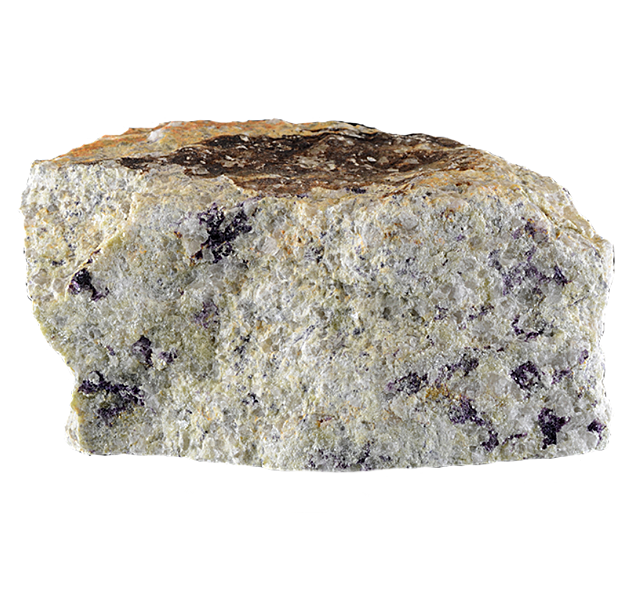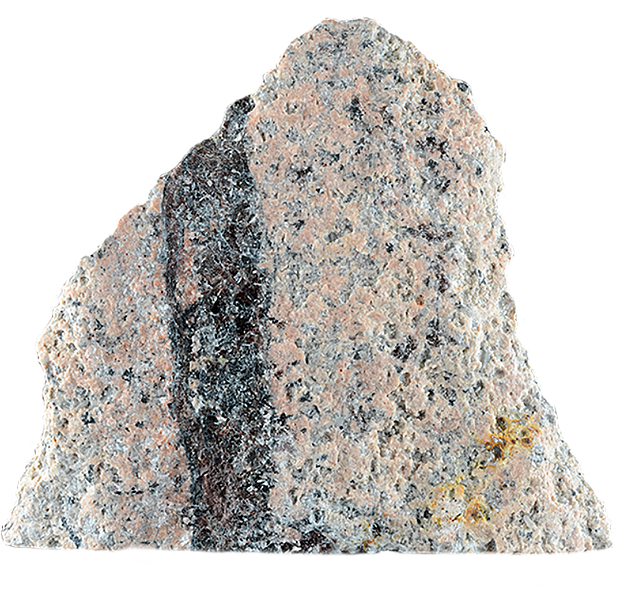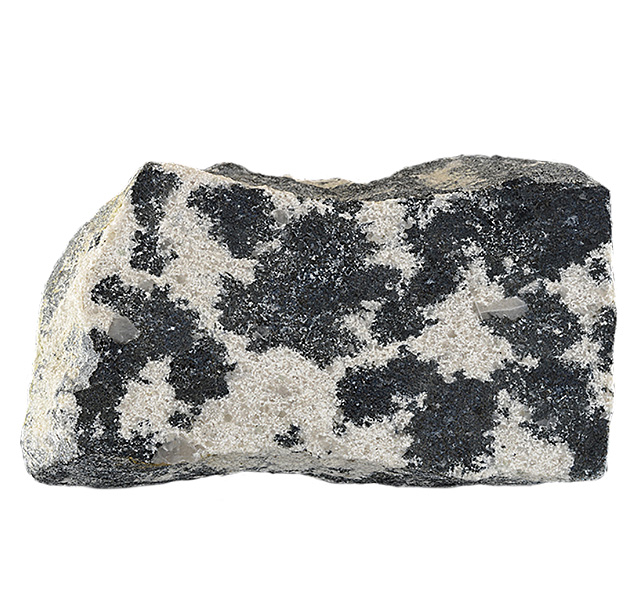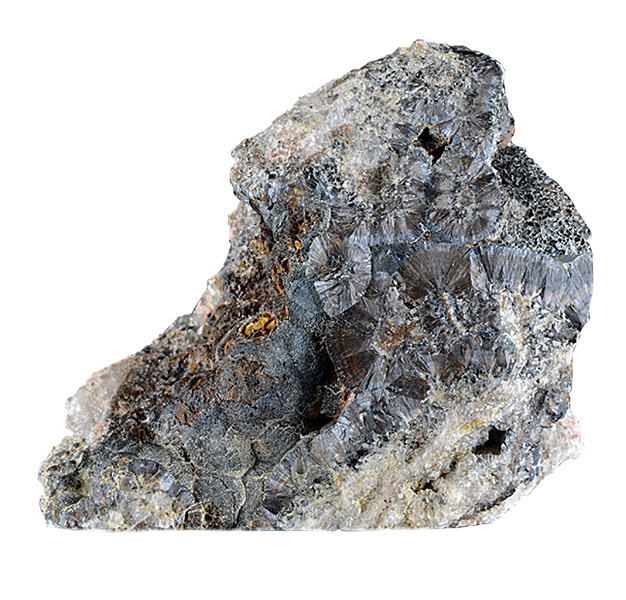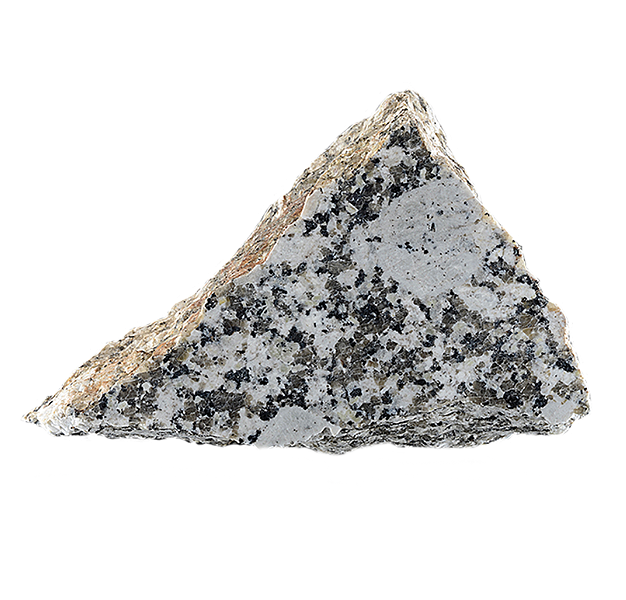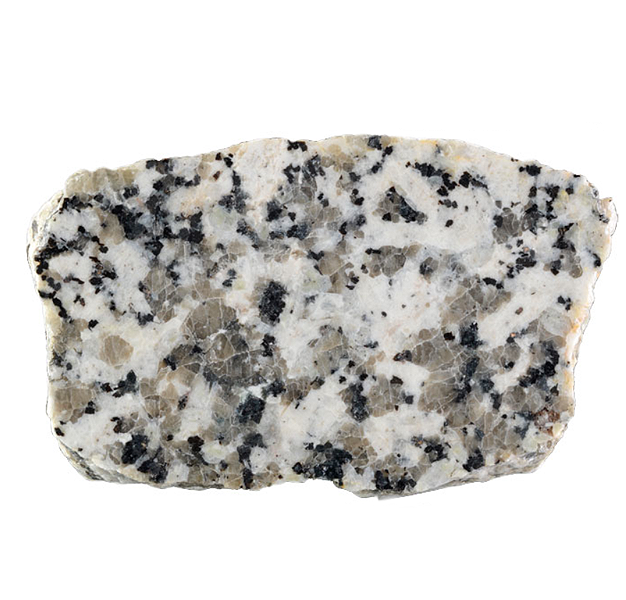
Fact sheet
This sample of siderophyllite(biotite)-rich granite comes from Luxulyan (Tregarden) quarry to the north of Luxulyan village. This sample is a less evolved portion of the intrusion, which is associated with later the tourmaline and topaz-rich intrusions and mineralisation. Luxulyan valley is part of a World Heritage Site containing the remains of extensive early 19th century industrial activity, including mining and quarrying, which at its peak included several water wheels and steam engines.
The thin section illustrates the quartz-rich nature of the rock, which also contains altered orthoclase, plagioclase and both siderophyllite and muscovite. The siderophyllite is notably rich in pleochroic haloes, indicating a high proportion of zircon and monazite crystals. Rotation 1 displays a rare crystal of cordierite surrounded by typical pinite alteration.
A case study of the St Austell granite complex in Cornwall, England, illustrating the range of rocks associated with a granite intrusion. The earliest part of the complex is a siderophyllite (biotite) granite containing muscovite and tourmaline typical of a SW England granite, with many primary magmatic features.
This early intrusion was followed by the intrusion of an evolved volatile-rich magma which was the driving force behind a series of intense hydrothermal processes as volatiles escaped from this magma and helped to establish an extensive alteration halo (aureole). Boron, fluorine and lithium (as well as water) played major roles in the formation of the second intrusion and in the associated hydrothermal processes. Igneous activity lasted around 18 million years from 282 Ma (siderophyllite granite) to 265 Ma (fluorite granite).
